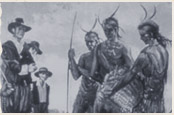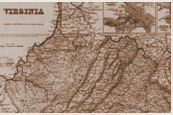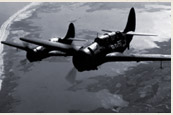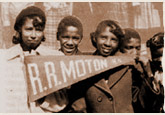Fireside Chat on the Progress of the War
Franklin D. Roosevelt Presidential Library and Museum
Description: Delivered on the 210th anniversary of Washington's Birthday, this Fireside Chat masterfully disseminates information at the same time as inspiring patriotic zeal and rallying the American people. President Roosevelt asked his listeners to take out their maps of the world and follow along with him as he described in detail the parameters and objectives of American (Allied) military strategies to defeat Germany, Italy and Japan. He also spoke about the mobilization of American resources and the resolve of the American people to win the war. The speech truly opens a "window on the past" to enable students to consider how government officials and American citizens perceived the nature of the war and its aims and objectives at the beginning of the crucial year of 1942.
Teaching Tips:
"Do Now" Suggestion
- Students can read the opening paragraphs of the address (up until "It is a warfare in terms of every continent, every island, every sea, every air-lane in the world.") and could respond to the following questions in a journal or in a think-pair-share: a) To which example from history does FDR compare the current experience of WWII? b) Why do you think he uses this example? c) How do the opening paragraphs of this fireside chat set the tone for FDR's explanation on the progress of the war? d) How does the tone rank on a spectrum of American isolationism? e) What do you predict FDR will discuss in the remainder of the address?
- In the address, FDR asked his listeners to take out their maps and follow along with him. It might be interesting to hand out blank world maps to students and ask them to read through the address. They would be responsible for labeling any body of water, country, and city mentioned in the speech. They also could record the bomber routes and the control of the Pacific islands (Ally v. Axis powers), which FDR described. Students might need to use historical maps, either in print form or on the Internet, to help them complete the task. Please note: this standard asks students to be able to describe the major battles and turning points of the war, including Midway, Stalingrad, the Normandy landing, and the atomic bombs in Japan. As the students continue to study WWII, they can add these major battles and turning points to their map and even annotate the battles to explain why they are described as turning points.



